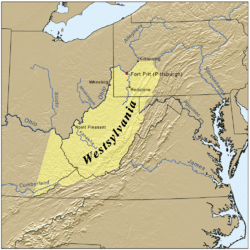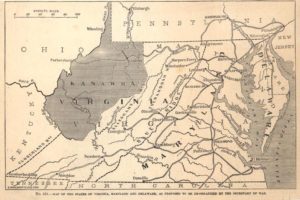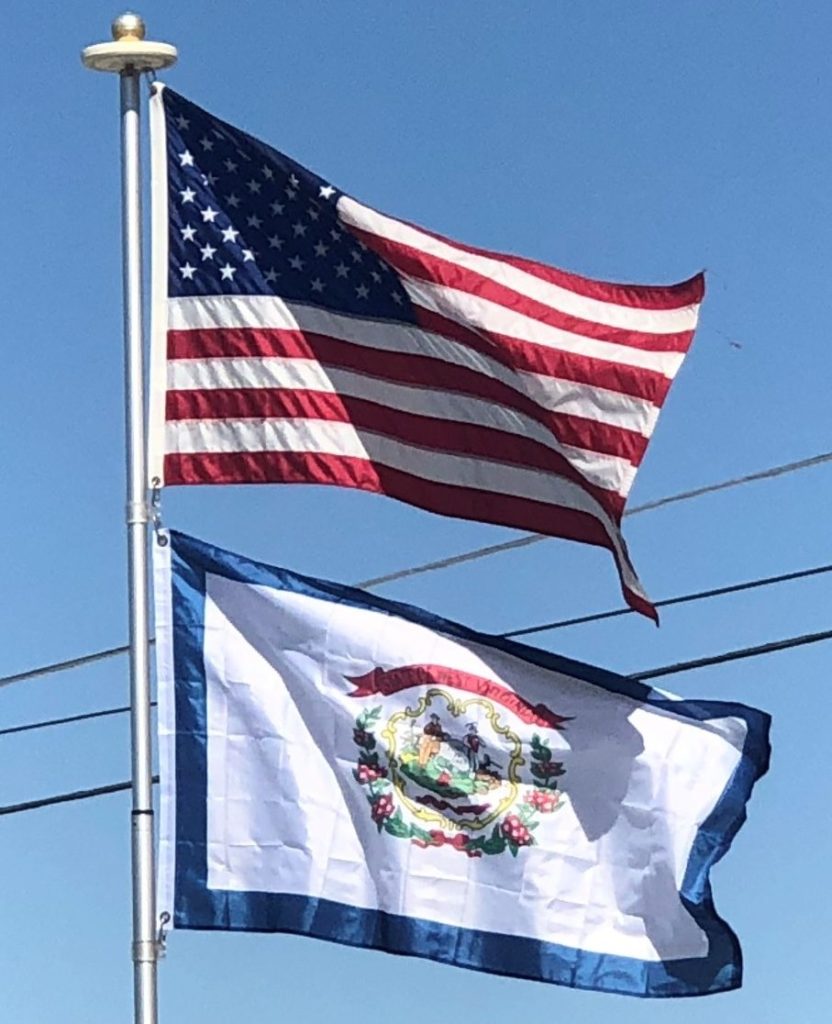
Shortly before the American Revolutionary War, in 1774 the Crown Governor of Virginia John Murray, 4th Earl of Dunmore, led a force over the mountains. A body of militia under then-Colonel Andrew Lewis dealt the Shawnee Indians, under Hokoleskwa (or “Cornstalk”), a crushing blow during the Battle of Point Pleasant at the junction of the Kanawha and the Ohio rivers. At the Treaty of Camp Charlotte concluding Dunmore’s War, Cornstalk agreed to recognize the Ohio River as the new boundary with the “Long Knives”. By 1776, however, the Shawnee had returned to war, joining the Chickamauga, a band of Cherokee known for the area where they lived. Native American attacks on settlers continued until after the American Revolutionary War.
Trans-Allegheny Virginia:
Social conditions in western Virginia were entirely unlike those in the eastern portion of the state. The population was not homogeneous, as a considerable part of the immigration came by way of Pennsylvania and included Germans, Protestant Scotch-Irish, and settlers from the states farther north. During the American Revolution, the movement to create a state beyond the Alleghenies was revived and a petition for the establishment of “Westsylvania” was presented to Congress, on the grounds that the mountains presented an almost impassable barrier to the east. The rugged nature of the country made slavery unprofitable, and time only increased the social, political, economic, and cultural differences between the two sections of Virginia.

The eastern planter elite dominated the legislature and saw to their own interests.
Given these differences, many in the west had long contemplated a separate state. In particular, men such as lawyer Francis H. Pierpont from Fairmont, had long chafed under the political domination of the Tidewater and Piedmont slave-holders. In addition to differences over the abolition of slavery, he and allies felt the Virginia government ignored and refused to spend funds on needed internal improvements in the west, such as turnpikes and railroads.
Separation from Virginia:
West Virginia was the only state in the Union to separate from a Confederate state, Virginia, during the American Civil War. In Richmond on April 17, 1861, the Virginia Secession Convention of 1861 voted to secede from the Union, but of the 49 delegates from the northwestern corner, which ultimately became West Virginia, only 17 voted in favor of the Ordinance of Secession, while 30 voted against
Almost immediately after that vote, a mass meeting at Clarksburg recommended that each county in northwestern Virginia send delegates to a convention to meet in Wheeling on May 13, 1861. When this First Wheeling Convention met, 425 delegates from 25 counties were present. The convention decided that if Virginians adopted the secession ordinance, another convention including the members-elect of the legislature would meet in Wheeling in June 1861. On May 23, 1861, secession was ratified by a large majority in Virginia as a whole, but in the western counties 34,677 voted against and 19,121 voted for the Ordinance.

